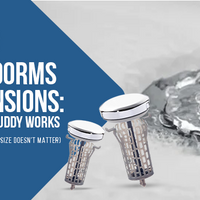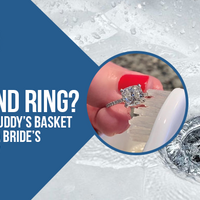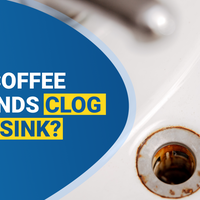Clogging of sinks, tubs, and toilets is a common household issue that can cause significant inconvenience and potentially costly repairs. Understanding the causes of these clogs, how to prevent them, and the best methods for resolving them can save both time and money. So, fear not; unclogging these drains doesn't have to be a stressful and expensive task. Each clog required a different method of clogging. With few basic tools and techniques, tackling these drains is not very difficult.
In this guide, we'll tackle how to conquer clogged drains in your:
- Sinks
- Tubs and Showers
- Toilets
HOW TO UNCLOG ANY DRAIN: SINK, TOILET, AND TUB

Let's delve into the list of tools before targeting their techniques that you will use in clogging your drains.
- Plunger Snake: A drain snake, or auger, can reach deeper into the pipes to remove more stubborn clogs. Insert the snake into the drain and rotate it to break up and pull out the obstruction.
- The baking soda and vinegar (natural cleaners for minor clogs): If the plunger doesn't work, use the fit combo of vinegar and baking soda. Pour a 1 cup of vinegar with 1 cup of baking soda and let it sit for about half an hour, then flush with hot water.
- Wire Hanger Hook: The effective method works similarly to snakes. A straightened clothes hanger can be a lifesaver. Unwrap the hanger, carefully insert the straightened end of the hanger, and feed it out into the drain.
Now, let's unclog the sink drains!
1: Sink Slowdown:
Plungers are excellent, but it's important to use the right technique.
Step 1: Boiling water
Sometimes, a simple solution works the best. Boil a pot of water and simply pour it into the sink drain. It will remove all oily and greasy parts.
Step 2: Use of Plunger
If boiling water doesn’t work, use a plunger, but make sure to block the overflow drain to create a good seal. Then place the plunger over the sink and ensure that, the plumber works up and down vigorously for about 20 to 30 seconds.
How to unclog the toilet
A clog merely occurs on top when it comes to toilets; sometimes it gets hard to unclog it, so using a closet auger becomes essential in various conditions.

Step 1: The Plunger with Power:
Start again with the plunger, but toilets require a special plain-flanged plunger to create a seal. Start plunging forcefully and repeat it for 15–20 seconds. Repeat as necessary.
Step 2: Use Toilet Auger:
If the plunger doesn't work, use a toilet auger, which is especially designed for stubborn clogs. Insert the snake (auger) end in the toilet bowl and break up the clog. Be gentle to avoid damaging the toilet.
Step 3: Baking soda and vinegar
Pour 1 cup of baking soda and 1 cup of vinegar into the toilet bowl and repeat this process for minor clogs only. Let it sit for about 325 minutes, then flush with hot water.
Step 4: Chemical Drain Cleaner
If nothing really works, try to use a chemical drain cleaner.
How to Unclog a Bathtub
Step 1: Remove and Clean the Stopper
If the bathtub drain is full of hair, start clogging by removing and cleaning stoppers first.
If the stopper doesn't work, use the plunger and plunge the bathtub drain vigorously for several minutes.
Here's the plunging technique:
- Block the overflow drain.
- Place the plunger firmly.
- Plunge vigorously for 30 sec.
- Repeat the process if necessary.
Step 3: Baking soda and vinegar
If plunging doesn't work, try this natural combo.
- Pour 1/2 cup of baking soda.
- Then add 1/2 cup of vinegar, slowly following the soda.
- A fizzy mixture will appear.
- Let it sit for about 20 minutes, then rinse with hot water.
Step 4: Fishing Out the Culprit:
Use a zip-it tool for stubborn hair clogs but, how to use it:
- Straighten a clothes hanger first.
- Insert the tool of the hanger into the drain opening.
- Check out the hole where you can snag any hair.
- Then gradually pull it out.
Drain Catcher
To avoid clogging, put a drain catcher over the sink that will directly catch hairs.
Types of Drain Catchers:
-
Sink Strainers:
-
Typically used in kitchen sinks.
-
Designed to catch food particles and other debris.
-
Shower/Bathtub Drain Catchers:
-
Designed to catch hair and soap scum.
-
Often made of silicone or rubber for flexibility.
-
Bathroom Sink Strainers:
-
Used to catch hair and small debris.
-
Often smaller and more finely meshed than kitchen sink strainers.
Benefits of Using a Drain Catcher:
Prevents Clogs:
-
Traps hair, food particles, and other debris before they enter the drain, reducing the risk of clogs.
Easy Maintenance:
-
It can easily clean and remove
Cost-Effective:
-
Helps avoid costly plumbing repairs by preventing blockages.
Hygienic:
-
It traps debris, which keeps your shower cleaner.
How to Use a Drain Catcher:
-
Select the Right Size
-
Install the drain catcher
-
Regular Cleaning
-
Replacement
Preventing Clogs: An Ounce of Prevention
- Avoid chemical drain cleaners: They can be distasteful for your pipes, so try to use them only when other methods fail.
- Regular Maintenance: Regularly clean your drain to prevent clogging.
- Professional help: If you have tried all the methods but nothing made any difference, then it's the right time to call the plumber to avoid water damage.
- Install Drain Screens/Drain Catcher: To avoid clogging, put a drain catcher over the sink that will directly catch hairs.
Bonus Tip: Regularly cleaning your bathtub drain can help prevent clogs in the first place. Pour a cup of baking soda followed by hot water down the drain every month to keep things flowing smoothly.
Wrapping it up:
Unclogging regularly seems like a daunting task, but with the help of the right tools and basic information, you can avoid the damage. By understanding the common causes of clogs, implementing preventive measures, and knowing the best solutions for resolving them, you can keep your plumbing system in top condition. Regular maintenance can help you keep your drains clean and functional. By following these guides, you can save both money and time. So, if you face the same problem next time, try to remember these tips to tackle all the clogs with confidence.
Read Other Blogs too:







